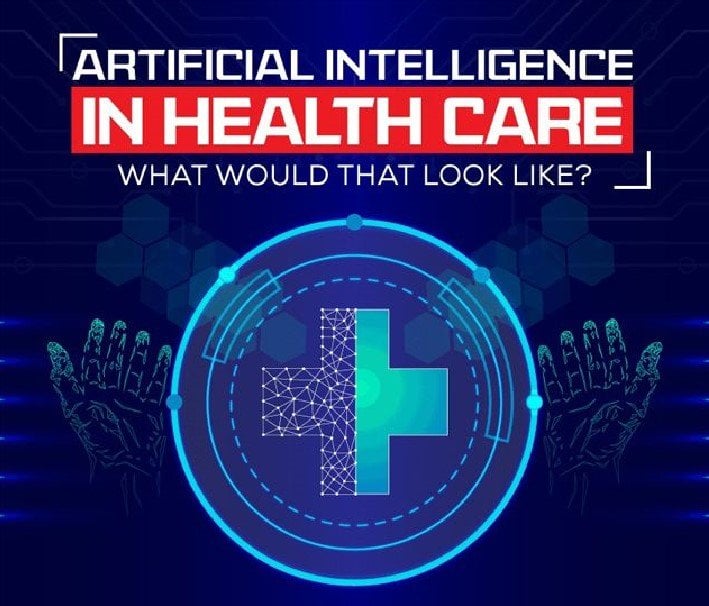There’s no doubt that artificial intelligence, or AI, is making its mark on several industries. Although the public is fascinated by AI’s numerous possibilities in entertaining and gaming, more urgent AI applications can be found in the health care industry. What follows is an overview of several ways AI can be applied to health care, emphasizing its role in predicting inpatient mortality and describing its benefits.
To learn more, check out the infographic below created by the University of Cincinnati’s Bachelor of Science in Medical Laboratory Science program.
Q3 hedge fund letters, conference, scoops etc
AI And End-of-Life Healthcare
The cost of end-of-life health care is high on a per-patient basis. There are 2.7 million deaths in the U.S., and the cost of care nearly doubles in the last three years of life. Furthermore, an average of $80,000 is spent on American patients in their last year of life, costs that stem from sources like hospitals, pharmaceuticals, and long-term care. These costs may be mitigated through different applications of AI toward the end of a patient’s life.
Death And Medicare
In 2014, there were 55.7 million Medicare beneficiaries. 22% of these beneficiaries were 80 and older. 4% of the 55.7 million passed away in 2014, and 55% of that percentile were 80 years and older.
Medicare Cost
The cost of Medicare is four times higher for decedents ($34,529) than survivors ($9,121). It should be noted that the older the patient, the less money is spent on end-of-life care. This suggests more aggressive end-of-life care in younger Medicare recipients.
Health Care And End-of-Life Care
80% of Americans state they’d prefer to spend their last days at home if possible. However, only 35% of Americans die at home. Conversely, 60% of Americans die in an acute care hospital, where they commonly receive aggressive medical treatments at the time of death.
AI And End-of-Life Care
While AI won’t replace human physicians, it can help them make better decisions. There are two categories of Medical AI to consider. The first category deploys machine learning techniques to analyze structured data and cluster patients’ traits to infer the probability of disease outcomes. The second category deploys natural language processing that analyzes unstructured data before it turns it into structured data. Regardless of category, AI is currently focused on three diseases: Cancer; nervous system disease; and cardiovascular disease.
Predicting Inpatient Mortality
The projected need for long-term and palliative care makes accurately predicting patient end-of-life vital, and researchers are turning to AI for help. Currently, about 25% of U.S. deaths occur in a long-term care setting. However, this percentage is predicted to be at 40% by 2040. Additionally, about 90 million Americans are currently living with a serious illness – a number predicted to double in the next 25 years.
Roughly 6 million Americans could benefit from palliative care. However, 8% of hospital admissions need palliative care, and less than half of these admissions receive this type of care.
Help is potentially on the way. Tech company Kensci created an AI program to predict patient life via a “deep learning” algorithm, a machine learning technique that uses neural networks to efficiently analyze large amounts of data.
The program was tested on data culled from 2 million adult and child patient records admitted to Stanford Hospital and Lucille Packard Children’s Hospital. No specific disease types, stages, or severity was divulged. Eventually, the records were whittled down to 200,000; AI studied 160,000 of them to build an algorithm and used the remaining 40,000 to predict mortality. AI predicted mortality within 3 to 12 months with 90% accuracy. 95% of patients assessed with low dying probability lived past 12 months.
Potential AI Complications
There are some issues to still sort out. For instance, there is the encompassing “black box” nature of deep learning. There’s also concerns that it could create an answer without a methodology. An AI system could also create unpredictability and may be susceptible to hacking.
Goals Of AI
There are three chief goals behind AI. Firstly, it could improve access to palliative care for patients. It could also identify seriously ill patients in need of palliative care. Finally, it could predict the time of death of seriously ill patients.
Benefits Of AI
While physicians are irreplaceable, AI could allow them to perform their tasks more efficiently, including providing higher-quality end-of-life care.
More Efficient Palliative Care
46% of patients who die use palliative health care services, yet these services tend to come too late. The median patient stay in hospice care is 23 days, and 28% of patients discharge or die within seven days of enrollment. There are several benefits of accurately deploying these services, including improved caregiver efficiency and the chance for a patient to pass in preferred surroundings.
AI's Role In Improving Health Care
AI-produced diagnostics may reduce instances of human error, a key metric considering medical errors rank as the third-leading cause of death in the U.S. behind heart disease and cancer. This cause of death increases when patients are treated by older physicians. 12.1% of patients ages 65 and older died when treated by physicians 60 and over, as opposed to physicians aged 50-59 (11.3%), 40-49 (11.1%), or under 40 (10.8%).
AI can help mitigate these errors by diagnosing problems more efficiently. This can save the patient time and accelerate the start of treatment options. It can also reduce cost. According to the research firm Frost & Sullivan, AI’s ability to increase efficiency and reduce errors can lower treatment costs by 50%.
AI has the potential to make a significant impact on the health care industry, from accurately predicting palliative care scenarios for end-of-life patients to lowering human error and costs. While AI will never completely take over the health care industry, health professionals’ capacity to use analytical data to produce accurate care scenarios can help the industry run more efficiently, which can lead to higher-quality health care.







